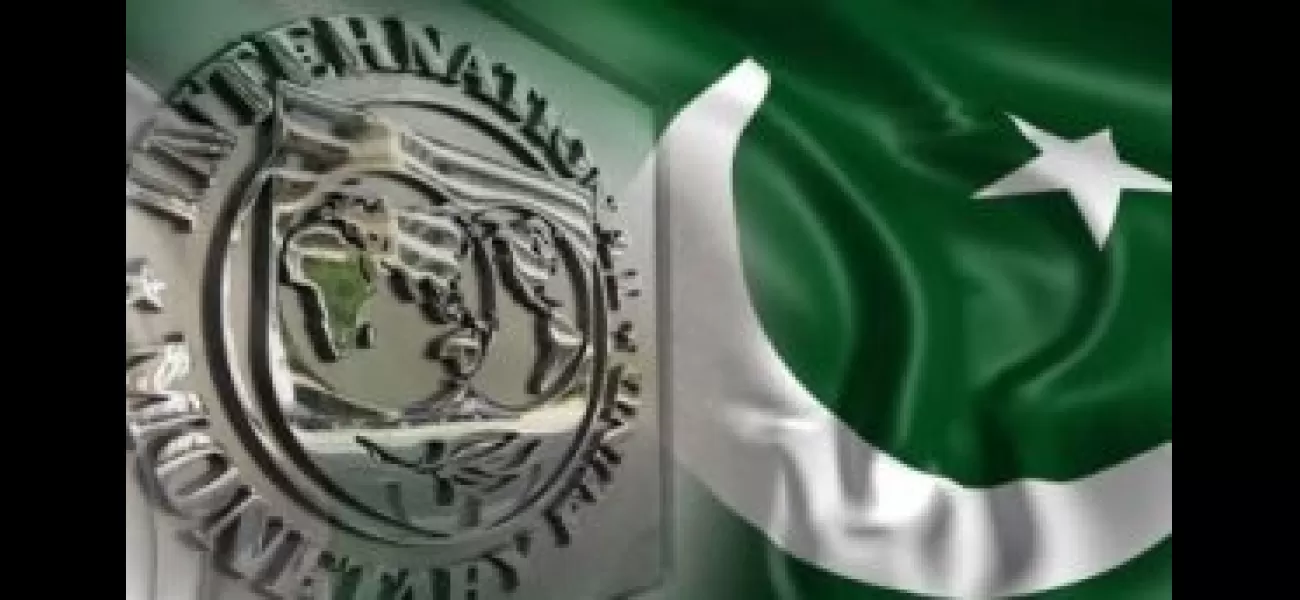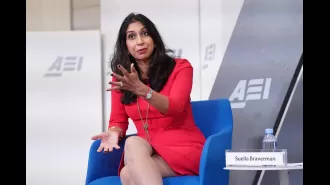Pakistan and IMF start discussions for a new bailout deal.
Pakistan and IMF begin talks for new bailout package to tackle financial struggles and implement necessary reforms, according to reports.
May 14th 2024.

Negotiations have begun between Pakistan and the International Monetary Fund (IMF) for a new bailout package. This is in response to the country's current financial struggles and the need for crucial reforms. According to media reports on Tuesday, the IMF's mission chief to Pakistan, Nathan Porter, met with Finance Minister Muhammad Aurangzeb on Monday to discuss further engagement with the Fund.
The Ministry of Finance released a statement saying that the finance minister welcomed the IMF team and expressed gratitude for the successful completion of the Stand-By Arrangement (SBA). Aurangzeb also updated the team on the progress of macroeconomic indicators since the SBA and reiterated the government's commitment to continue and expand upon the reform agenda.
Last month, Pakistan completed a USD 3 billion programme with the IMF, which helped the country avoid defaulting on its debts. However, it is uncertain if the current IMF mission will result in a formal staff-level agreement for the next bailout package, as reported by The Express Tribune. The duration, instrument, and size of the package are up for discussion, according to sources.
The recent decision by Prime Minister Shehbaz Sharif to provide Rs 23 billion in subsidies for consumers in Pakistan-occupied Kashmir has made things more complicated for the government in the eyes of the IMF. This move was made in response to protests against high wheat flour prices and inflated electricity bills in the disputed region, which resulted in several injuries and deaths.
During the meeting, Porter also brought up the issue of the shortfall in tax collection and the disparity between federal and provincial taxation, as reported by The Dawn newspaper. It is estimated that a fiscal adjustment of at least 1.5 per cent of the GDP or about Rs 1.6 trillion will need to be made in the upcoming budget. This will involve a combination of revenue measures, expenditure rationalisation, and privatisation.
The next few days of discussions will focus on specific allocations for these areas, while also addressing sector-specific issues. However, sources state that most of the groundwork has already been laid out during the recently concluded nine-month Stand-By Agreement. The government aims to finalise these discussions before presenting the federal budget in June.
The finance minister has already announced plans for pension reforms as a key expenditure rationalisation measure, along with fewer allocations for development spending. On the revenue side, the focus will be on expanding the tax net and transforming the general sales tax into a real value-added tax. Additionally, the government plans to diversify revenue sources by targeting retail and wholesale traders, agriculture, and reducing income tax slabs.
The government also expects to generate non-tax revenue through the petroleum levy, with a target of at least Rs 1.1 trillion in the upcoming budget. As part of their commitment to the IMF, the government will continue to adjust gas and electricity tariffs as needed, while also reducing energy costs and involving the private sector in addressing circular debt.
Prime Minister Sharif recently announced that all state-owned enterprises, except for strategic ones, will be privatised. This decision was made in response to an advance team from the IMF reaching Pakistan last week after the country requested a larger and longer bailout package.
According to media reports, Pakistan is seeking a bailout package ranging from USD 6 to USD 8 billion for three years under the Extended Fund Facility, with the possibility of additional funds through climate financing. If successful, this will be the 24th IMF bailout programme for Pakistan.
Despite narrowly avoiding default last summer, the country is still dealing with a high fiscal deficit. While the external account deficit has been controlled through import control measures, this has resulted in stagnant growth, which is expected to be around two per cent this year. However, this is a significant improvement from the negative growth experienced last year.
The Ministry of Finance released a statement saying that the finance minister welcomed the IMF team and expressed gratitude for the successful completion of the Stand-By Arrangement (SBA). Aurangzeb also updated the team on the progress of macroeconomic indicators since the SBA and reiterated the government's commitment to continue and expand upon the reform agenda.
Last month, Pakistan completed a USD 3 billion programme with the IMF, which helped the country avoid defaulting on its debts. However, it is uncertain if the current IMF mission will result in a formal staff-level agreement for the next bailout package, as reported by The Express Tribune. The duration, instrument, and size of the package are up for discussion, according to sources.
The recent decision by Prime Minister Shehbaz Sharif to provide Rs 23 billion in subsidies for consumers in Pakistan-occupied Kashmir has made things more complicated for the government in the eyes of the IMF. This move was made in response to protests against high wheat flour prices and inflated electricity bills in the disputed region, which resulted in several injuries and deaths.
During the meeting, Porter also brought up the issue of the shortfall in tax collection and the disparity between federal and provincial taxation, as reported by The Dawn newspaper. It is estimated that a fiscal adjustment of at least 1.5 per cent of the GDP or about Rs 1.6 trillion will need to be made in the upcoming budget. This will involve a combination of revenue measures, expenditure rationalisation, and privatisation.
The next few days of discussions will focus on specific allocations for these areas, while also addressing sector-specific issues. However, sources state that most of the groundwork has already been laid out during the recently concluded nine-month Stand-By Agreement. The government aims to finalise these discussions before presenting the federal budget in June.
The finance minister has already announced plans for pension reforms as a key expenditure rationalisation measure, along with fewer allocations for development spending. On the revenue side, the focus will be on expanding the tax net and transforming the general sales tax into a real value-added tax. Additionally, the government plans to diversify revenue sources by targeting retail and wholesale traders, agriculture, and reducing income tax slabs.
The government also expects to generate non-tax revenue through the petroleum levy, with a target of at least Rs 1.1 trillion in the upcoming budget. As part of their commitment to the IMF, the government will continue to adjust gas and electricity tariffs as needed, while also reducing energy costs and involving the private sector in addressing circular debt.
Prime Minister Sharif recently announced that all state-owned enterprises, except for strategic ones, will be privatised. This decision was made in response to an advance team from the IMF reaching Pakistan last week after the country requested a larger and longer bailout package.
According to media reports, Pakistan is seeking a bailout package ranging from USD 6 to USD 8 billion for three years under the Extended Fund Facility, with the possibility of additional funds through climate financing. If successful, this will be the 24th IMF bailout programme for Pakistan.
Despite narrowly avoiding default last summer, the country is still dealing with a high fiscal deficit. While the external account deficit has been controlled through import control measures, this has resulted in stagnant growth, which is expected to be around two per cent this year. However, this is a significant improvement from the negative growth experienced last year.
[This article has been trending online recently and has been generated with AI. Your feed is customized.]
[Generative AI is experimental.]
0
0
Submit Comment





